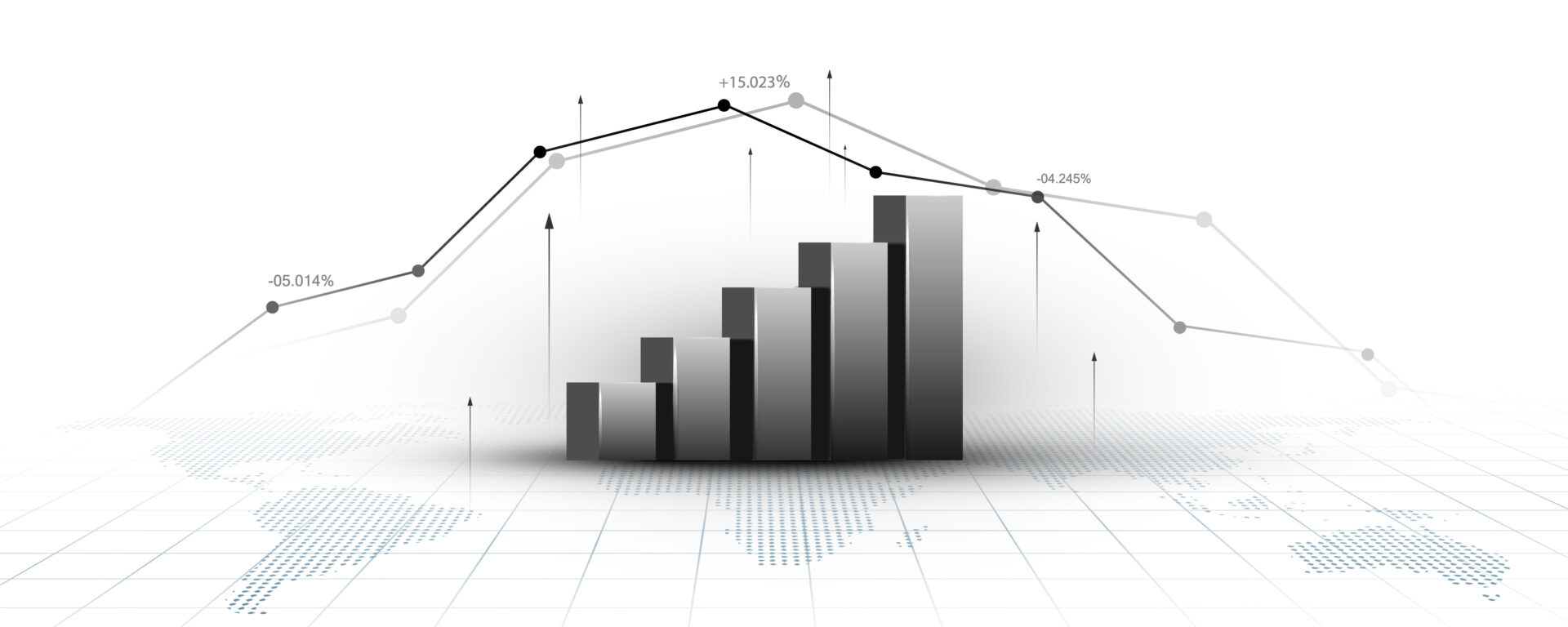6 minutes read
Automating Pricing Decisions Through AI-powered Datasets

Profits are steadily eroding in the pharmaceutical industry – thanks to rising costs across labour and raw materials, alongside persistent price pressure. Getting drug pricing right is therefore more important than ever.
Traditional methods to set and negotiate drug pricing over the lifetime of a drug fail to leverage the wealth of available data and therefore limit profitability. It also poses the risk of costly mistakes: just consider the embarrassing climb-down by Aduhelm maker Biogen, for example.
Vamstar addresses these challenges by harnessing AI combined with a meticulously curated dataset to streamline and automate the pricing and negotiation process.
From assembling and refining relevant data to applying sophisticated pattern recognition and predictive analytics, read on to see how Vamstar’s Polaris platform helps suppliers set optimal prices in a tough market.
Manually setting prices is inherently risky
In life sciences, optimal pricing maximises value, minimises risk, and ultimately improves patient outcomes. Nonetheless, suppliers often rely on outdated, error-prone methods to set their prices – errors that can be very costly across multi-year contracts. The source of the problem looks roughly like this:
- The Excel trap: Excel was never suited to the complexities of pharmaceutical pricing. Modelling dynamic market factors, competitor strategies, and intricate cost structures using a spreadsheet is cumbersome and risk prone. Formulas get misaligned, data becomes outdated, and costly errors inevitably creep in.
- Oversimplified models: Simple cost-plus pricing functions as a baseline, but it fails to offer any modelling depth in a market that is nuanced and complex. Simplified models won’t reflect the true potential of a product in comparison to the competition, nor the willingness (and ability) of payers to improve their offers.
- Revenue management falls short: Past attempts using revenue-management platforms did improve pricing management, but revenue management platforms are not built with the specific goal of price optimisation in mind and cannot model drug prices.
- Untapped data goldmine: A treasure trove of valuable pricing data is going unutilised. Market share information, historical pricing trends, and competitor intelligence are all available in public data sets, but these data sets are scattered and disconnected. Current pricing methods offer no way to integrate and make sense of this vast pool of insights.
The net result is missed profit opportunities, vulnerability to competitor moves, and less-than-ideal value delivered to payers and to patients, risking suboptimal patient care.
Complex negotiations require extensive analytics
Setting prices for pharmaceuticals is far from a one-and-done task. It’s an intricate dance involving internal calculations, external market dynamics, and ultimately, a value proposition that convinces payers.
Comprehensive and up-to-date data, deep and broad analytics, and a good measure of automation lead to a more accurate and more defensible process of setting initial prices. It means that suppliers can include market trends, comparable products, and the unique benefits a drug offers in their pricing decisions.
Furthermore, these insights help manufacturers optimise pricing through the lifecycle of the drug – providing much-needed data during complex negotiations.
Payers will naturally seek to minimise costs, often armed with internal datasets. Here, concrete pricing data provides the firepower to counter objections and negotiate from a position of strength.
Detailed market analysis, insights into competitor pricing, and even historical trends on discounts – all provide leverage. Extensive analytics and data also offer supporting evidence in a world of evolving regulations and heightened scrutiny around drug costs.
Data, AI, and automation from Vamstar
To secure the value of innovation, drug manufacturers must find a way to collect and analyse the data that support pricing decisions – but that’s easier said than done. At Vamstar, we developed a pricing product that utilises a deep pool of data, carefully applied AI, and purpose-built automation to deliver unprecedented control over the pricing process. It works like this:
Step 1: Assembling and refining a Pharma dataset
The first obstacle to setting pricing is the fragmented nature of relevant data. Public datasets on pricing trends, competitor analysis, historical wins, and losses, and countless other factors exist, but these data sets are scattered, messy, and often designed for other industries.
Vamstar begins the journey here as our expert data scientists meticulously gather these scattered datasets. We collect data on market share, penetration rates, and product adoption rates; cleaning and reshaping applying life science-specific knowledge to ensure the data brings value.
We then connect this data to produce a highly curated proprietary data set that acts as an engine for pharmaceutical intelligence.
Step 2: Harness the pattern-seeking power of AI
With the foundations laid, Vamstar’s AI-driven tools take centre stage. Using proven AI models tweaked for life science use, Vamstar builds ultra-sophisticated pattern recognition and prediction engines, trained specifically on the complexities of life science pricing.
We combine your internal data with our custom dataset to reveal hidden connections between discount levels, competitor strategies, market dynamics, and a product’s unique value proposition.
AI also monitors market changes across the lifecycle of the drug, using rigorous analysis to spot pricing opportunities. These patterns wouldn’t be visible to the naked eye, but form the basis of intelligent, profitable pricing decisions including negotiating different discounts and higher reimbursement rates.
Step 3: Automation that transforms insight into action
Data and analysis are meaningless without action, and taking the steps to price correctly is often beyond the abilities of time-pressured life sciences companies. Vamstar delivers a streamlined platform that eliminates the tedious, error-prone aspects of pricing.
Vamstar Polaris delivers data-driven pricing recommendations, scenario modelling tools, and a centralised hub for tracking pricing performance. It’s the difference between fumbling with spreadsheets and having an expert co-pilot guiding every decision.
Automation goes beyond internal efficiency. When payer negotiations begin, a supplier is already armed with hard evidence. Suppliers can confidently justify pricing not with vague promises, but with clear data demonstrating a product’s superior value.
Empowered pricing across the drug lifecycle
The impact of Vamstar’s informed, automated, AI-powered pricing platform extends far beyond a single launch or negotiation. It’s about ensuring optimal pricing at every stage of a drug’s lifecycle:
Strong foundations: Pricing is never a shot in the dark, always backed with data-driven insights that ensure initial offers are aligned with the state of the market.
- Stop costly mistakes: Prevent excel errors and miscalculations that can cost millions thanks to the safety net of set processes and extensive automation.
- Maximise pricing over the lifecycle: Vamstar ensures that manufacturers continue to drive profits even after loss of exclusivity, providing pricing data to ensure optimal price setting and price calibration through the lifecycle of the drug.
- Right offer, right customer: Compensate for shifting market conditions through AI analytics that monitor trends and buyer behaviour – and tailor offers for specific segments to prevent leakage caused by overly generalised pricing.
- Negotiation advantage: At every step, never guess what the payer might accept – work with concrete data analytics including historical trends and market and competitor intelligence.
- Profit optimisation within constraints: Find the sweet spot even within heavily regulated frameworks, by modelling different scenarios and understanding the impact of discounts.
AI-driven pricing also supports industry efforts to maximise patient outcomes by indirectly (or directly) outcomes through an improved understanding of the true value drivers for each and every stakeholder.
Dynamic pricing for a changing landscape
As profit margins remain under pressure, more market changes are on the way. It is only the suppliers that invest in getting pricing right that will manage to avoid ongoing price erosion, and squeezed profits over the lifetime of the drug.
Suppliers that harness Vamstar’s Polaris can develop a pricing strategy that’s as dynamic as the market itself, minimising missed opportunities and maximising the value a life sciences company extracts from every innovation it brings into the world.
The required data and analytics tools are out there – the time to act is now. Get in touch with Vamstar now to see how Polaris can help your organisation improve the pricing process – and your organisation’s bottom line.
Improve your pricing process
Create a pricing strategy that adapts in real-time with the market, minimising missed opportunities and maximising gains.
Register To Find Out More
Please provide your details and one of our lead consultants will contact you
Other Materials
Book a 30 minutes meeting with us
Welcome to our scheduling page! Please choose an available date below to get started.
30 minutes meeting
We’ll email you the meeting link






















